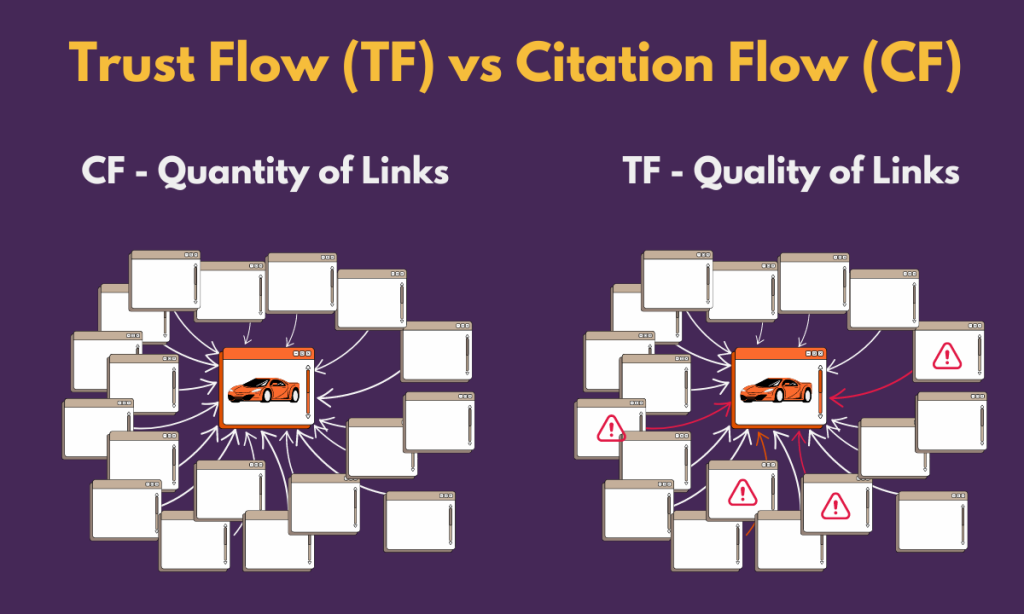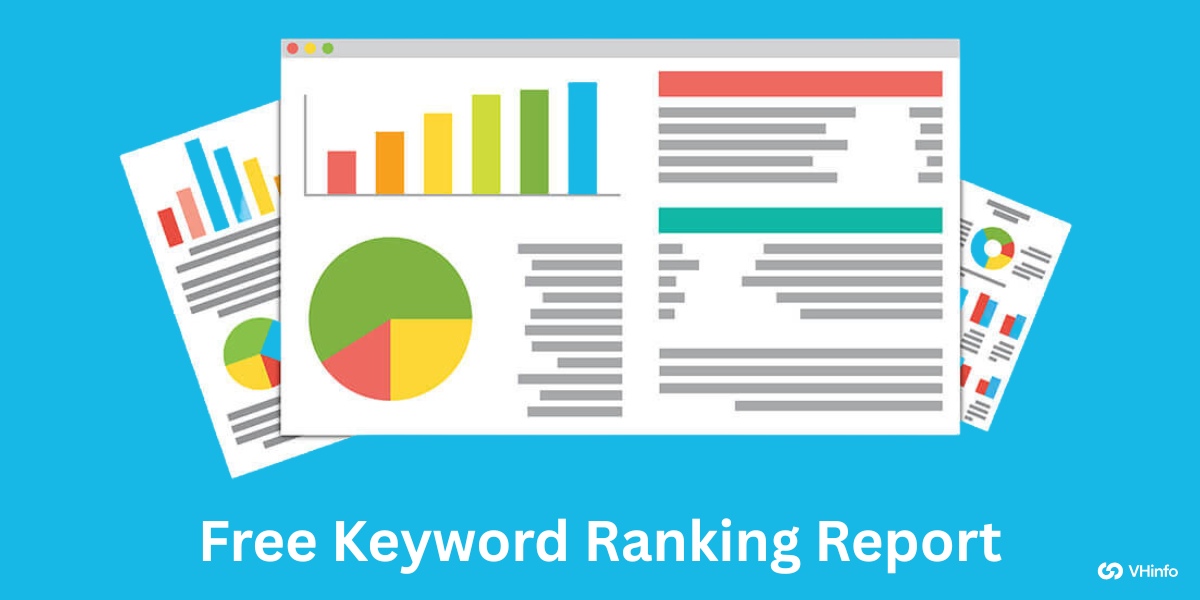In the online world, trust is very important. For your business to do well, people need to trust your website.
Search engines like Google also need to know they can trust your site. But how do search engines decide which websites to trust?
They look at the links pointing to your website. This is where a metric called Trust Flow comes in. It is a score that helps measure the trustworthiness of a website.
Paying attention to this score is a key part of your SEO efforts because it directly relates to the quality of your backlinks. A high trust flow tells search engines your site is a credible source of information, which can lead to better visibility in search results.
This guide will explain everything you need to know about this important metric.
What is Trust Flow?

Trust Flow is an SEO metric created by the SEO tool Majestic SEO. It gives a website a score from 0 to 100. This score shows how trustworthy a site is based on the quality of links pointing to it. A website with many links from other highly trusted sites will have a high trust flow score.
On the other hand, if a site gets links from spammy or low-quality places, it will have a low trust flow.
The trust flow metric does not focus on the quantity of backlinks. Instead, it looks only at the quality. This makes it a very useful number for checking the health of your backlink profile. A higher trust flow is a strong sign of a healthy website.
The Role of Authoritative Seed Sites
The idea of Trust Flow starts with something called a seed site. A seed site is a website that is known to be very trustworthy.
Think of major news websites, government pages, or top university websites. Majestic hand-picked a large list of these trusted sites to be the foundation of this metric. Trust flow measures how closely your website is connected to these seed sites.
If a seed site links directly to you, your site’s trust flow gets a big boost. Even if a site that is linked by a seed site links to you, some of that trust is passed along. The closer your connection to these starting points of trust, the higher your score will be.
How Link Quality Is Measured?
Trust Flow is all about link quality. It does not care about the total number of backlinks.
One single link from a very trusted website is much more valuable than hundreds of links from unknown or spammy sites. This is a big reason why this metric is so important for SEO performance. It helps you focus on what really matters: getting quality backlinks.
When you are working on link building, your goal should always be to get links from sites that have a good trust flow themselves.
These powerful links pass more trust, or link equity, to your own web pages.
The Origin of Link-Based Trust Metrics
Before metrics like Trust Flow existed, it was harder to judge a link profile. People often focus only on the quantity of links.
The team at Majestic SEO saw this problem and created the flow metrics: Trust Flow and Citation Flow. These SEO metrics were designed to give website owners and digital marketing professionals a better way to look at a backlink profile.
Trust Flow was made specifically to measure the quality, while its partner metric, Citation Flow, measures quantity. Together, they offer valuable insights into how search engines might see a website.
Why Is A High Trust Flow Score Important?

A high Trust Flow score is very important for your website’s success. It acts as a stamp of approval, showing both users and search engines that your site is credible and valuable. When your score is high, it means that other respected websites are pointing to yours.
This tells search engines that your content is worth showing to more people.
Focusing on improving your score is one of the most effective SEO strategies you can use. A strong score can open doors to more organic traffic and better online visibility, giving you an edge in a competitive market.
The Impact of Trust Flow on Search Rankings
While Trust Flow is a metric from Majestic and not directly from Google, it is a very strong indicator of how well your site might perform in search results. There is a strong connection between a high trust flow and high search rankings.
Sites with higher scores tend to appear more often on the first page.
This is because the metric is based on the same idea that search engines use: links from trusted sites are a vote of confidence. A good score is a powerful ranking factor that can significantly boost your SEO performance and help you get more visitors from search.
How Trust Flow Enhances Domain Authority?
Domain Authority (DA) is another popular SEO metric from a different company, Moz.
While Trust Flow and DA are separate scores, they are related. Building a healthy backlink profile full of quality backlinks will help improve both your Trust Flow and your Domain Authority. A high trust flow score shows that your links are coming from trustworthy places.
This foundation of trust helps lift your site’s overall authority. When you work on improving your site’s trust flow, you are also helping to improve other important metrics that contribute to better search engine rankings.
Using Trust Flow to Gain A Competitive Edge
One of the smartest ways to use Trust Flow is to analyze your competitors.
By checking the Trust Flow score of other websites in your industry, you can see where you stand. If a top competitor has a very high trust flow, you can look at their backlink profile to see where they are getting their valuable links.
This keyword research can give you ideas for your own link-building efforts. If you find that your competitors have a low trust flow, you have a great opportunity. By focusing on building quality backlinks, you can raise your score and overtake them in the search results.
What A High Score Reveals About Your Link Profile?
A high Trust Flow score tells a positive story about your link profile. It shows that you have earned links from relevant websites that are considered authorities in their field. It proves that your backlink profile is not full of spammy links or toxic links.
Instead, it is a healthy backlink profile built on trust and credibility. It means your quality content is being recognized and shared. This is exactly what search engines want to see. A high score is proof that your SEO efforts are focused on long-term value, not short-term tricks.
How Can You Check Your Website’s Trust Flow?

To check your website’s Trust Flow, you need to use a special SEO tool.
Since the metric was created by Majestic, their tool is the source for this data. However, other platforms also show this metric.
Checking your score regularly is important. It helps you see if your link-building work is paying off and alerts you to any potential problems with your backlink profile. These tools can give you valuable insights to guide your SEO strategies.
Top SEO Tools For Measuring Trust Flow
The main tool for checking this score is Majestic SEO. You can enter any website URL, and it will show you the Trust Flow and Citation Flow scores. Majestic offers both free and paid plans, with the paid plans providing much more data.
While Majestic provides the score, understanding what to do with that information is the next step.
Here at VH-info, our SaaS link-building services help you analyze these SEO metrics and create a clear plan. We provide the expert guidance you need to improve your link-building efforts and earn a higher trust flow. Many tools offer a free trial to get started.
A Step-by-Step Guide to Analyzing Your Score
Checking your score is easy. First, you choose an SEO tool like Majestic. Then, you type your website’s address into the search bar. The tool will then show you a dashboard with your Trust Flow score, which will be a number between 0 and 100.
It will also show you your Citation Flow score. Pay close attention to both numbers. A good analysis involves more than just looking at the score; it is about knowing what to do with that information to improve your SEO performance.
How to Interpret Your Trust Flow Results?
When you see your Trust Flow score, you need to know what it means. A score below 10 is very low and suggests your site has few trusted links or may have toxic backlinks. A score between 10 and 20 is average, but there is room for improvement.
A score above 30 is considered good. The goal is to always be working toward a high trust flow. Compare your score to other sites in your niche. If your competitors have higher scores, you know you have work to do on your link building.
Comparing Your Score Against Competitors
Do not just look at your own score in isolation. A powerful part of using this metric is comparing your site’s trust flow to your main competitors. Make a list of your top 5-10 competitors and check their scores. This gives you a clear picture of where you fit in your market.
If your score is much lower, analyze their backlink profile to find opportunities. If your score is higher, you know your SEO strategies are working well. This comparison helps you set realistic goals for your link building efforts.
What Is the Difference Between Trust Flow and Citation Flow?

It is important to know that Trust Flow has a partner metric called Citation Flow. They are both called flow metrics and were created by Majestic to be used together. While Trust Flow measures the quality of backlinks, Citation Flow measures the quantity of backlinks.
Looking at just one of these scores does not give you the full picture. You need to look at both to truly analyze a website’s backlink profile and make smart decisions for your SEO efforts.
Defining the Citation Flow Metric
Citation Flow is a score from 0 to 100 that predicts how influential a website might be based on the number of backlinks it has.
A site with thousands of links pointing to it will likely have a high citation flow, even if those links are from low-quality or irrelevant sites. This metric does not care about the trustworthiness of the linking domains; it only cares about the volume of inbound links.
Because of this, a high citation flow on its own can be misleading. It does not tell you if the links are good or bad.
Analyzing the Trust Flow to Citation Flow Ratio
The real magic happens when you compare Trust Flow and Citation Flow. The ratio between these two SEO metrics tells a story. In a perfect world, you want these two numbers to be close to each other, with a ratio of around 1.0.
For example, a Trust Flow of 30 and a Citation Flow of 35 is a very healthy sign. This balanced ratio suggests a natural and healthy backlink profile, where the quantity of links is matched by their quality.
Why A Balanced Metric Ratio Matters?
A balanced ratio is a strong indicator of a healthy website.
If your Citation Flow is much higher than your Trust Flow (for example, a TF of 10 and a CF of 40), this is a red flag. It often means the website has a large number of backlinks, but many of them are low-quality or even spammy links.
This imbalance can hurt your search engine rankings. Search engines may see a site with a very imbalanced ratio as one that is trying to cheat the system. A balanced ratio shows that your link building is natural and focused on quality.
Strategies For Correcting an Imbalanced Ratio
If you find that your website has a high citation flow but a low trust flow, you need to take action. The main strategy is to focus all your energy on building high-quality backlinks from trusted and relevant websites.
At the same time, you should perform a backlink audit to find and remove any toxic backlinks that are hurting your score. By getting rid of bad links and adding good ones, you will increase your Trust Flow score.
This will help bring the ratio back into balance and improve your overall SEO performance.
How Can You Improve Your Website’s Trust Flow?

Improving your website’s Trust Flow takes time and effort, but it is one of the most rewarding things you can do for your SEO.
Building High-Quality Backlinks From Trusted Domains
The best way to improve your score is to get quality backlinks from trusted referring domains. This means earning links from websites that are respected and have a high trust flow themselves. One great way to do this is through guest posting.
When you write a helpful article for another website in your industry, you can often include a link back to your own site. Focus on creating guest posts for websites that are known for their quality content. These links pass the most trust and link equity.
The Value of Contextual Relevance in Links
When building links, it is not just about the trust of the linking site; it is also about its topic. This is called topical relevance.
A link from a site that is highly relevant to your industry is more valuable than a link from a random, unrelated site. Majestic even has a metric for this called Topical Trust Flow, which shows the topics your site is most trusted for.
When you get links from relevant websites, you are telling search engines that you are an authority in your specific niche.
Performing A Backlink Audit to Disavow Toxic Links
Sometimes, the best way to improve your score is to get rid of bad links. Over time, your website might get linked to by spammy or low-quality sites. These are known as toxic links or toxic backlinks, and they can hurt your site’s trust flow.
You should regularly perform a backlink audit to find these harmful links. Once you find them, you can use Google’s Disavow Tool to tell the search engine to ignore them. Cleaning up your backlink profile is a critical step toward building a higher trust flow.
Developing Content That Naturally Attracts Links
One of the most sustainable link-building strategies is to create quality content that people want to link to. When you publish helpful guides, original research, or useful tools on your web pages, other site owners and bloggers will naturally link to them as a resource.
This is the best way to earn quality backlinks. It helps you build a healthy backlink profile automatically. This approach not only improves your flow metrics but also drives organic traffic and establishes you as a thought leader. It is a win-win for your digital marketing plan.
FAQ’s:
What Is Considered A Good Trust Flow Score?
There is no single number that is “good” for every website. A good Trust Flow score is relative to your industry.
A good starting point is to aim for a score above 20. However, the best approach is to compare your score to your direct competitors. Your goal should be to have a score that is similar to or higher than theirs.
Ultimately, you should always be working to achieve a high trust flow score.
How Can Improving Trust Flow Help My SEO Results?
Improving your Trust Flow is a huge boost for your SEO results.
A higher score signals to search engines that your website is trustworthy and credible.
This can lead to better search engine rankings for your target keywords. It is a strong ranking factor because it is based on the quality of your inbound links, which is something search engines care about a lot. Better SEO performance often starts with a better Trust Flow.
How Frequently Should I Monitor My Trust Flow?
You should monitor your Trust Flow score on a regular basis. Checking it once a month or once per quarter is a good practice.
This allows you to track the progress of your link building campaigns. It also helps you quickly spot any sudden drops, which could mean you have acquired some toxic links. Consistent monitoring is a key part of maintaining a healthy backlink profile.
What Should I Do If My Trust Flow Score Drops Suddenly?
A sudden drop in your Trust Flow metric should be taken seriously. The first thing you should do is conduct a full backlink audit. Use an SEO tool to look at all the new referring domains that have linked to you recently. You are looking for low-quality or spammy links.
If you find any toxic backlinks, you should disavow them immediately to prevent further damage to your SEO efforts.
Do Internal Links Affect Trust Flow?
No, internal links do not directly affect your Trust Flow score.
The Trust Flow metric is calculated based only on external links, which are links coming from other websites to yours.
However, internal linking is still very important for SEO. A good internal linking structure helps search engines find all your web pages and helps spread link equity that you get from your quality backlinks throughout your entire site.
What is the Typical Timeframe to See Improvements in Trust Flow?
Improving your Trust Flow does not happen overnight. It is a long-term strategy. After you build new quality backlinks or disavow toxic links, it can take several weeks or even a few months for crawlers to process these changes and for the flow metrics to be updated.
Be patient and consistent with your link building, and you will eventually see higher scores.
Conclusion
Trust Flow is one of the most important SEO metrics you can track. It gives you a clear look at the quality of your backlinks and the overall trustworthiness of a website. Unlike metrics that only measure the quantity of links, Trust Flow focuses on quality, which is what search engines care about most. By working to improve your score, you are building a strong foundation for long-term SEO success.
Focus on creating quality content, earning links from trusted and relevant websites, and keeping your backlink profile clean from toxic links. These are the core principles of building a higher trust flow.
By making this metric a central part of your SEO strategies, you can improve your search rankings, drive more organic traffic, and build a website that both users and search engines can trust.
With platforms like VH-info providing valuable insights, you can confidently guide your link building efforts toward a better SEO performance.


